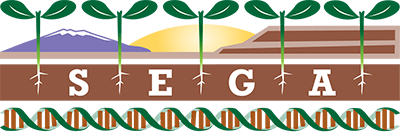You are here
Genetic basis of aboveground productivity in two native Populus species and their hybrids.
Publication Type:
Journal ArticleSource:
Tree physiology, Volume 29, Issue 9, p.1133 - 42 (2009)ISBN:
0829-318XURL:
http://www.ncbi.nlm.nih.gov/sites/entrez?Db=pubmed&DbFrom=pubmed&Cmd=Link&LinkName=pubmed_pubmed&LinkReadableName=Related%20Articles&IdsFromResult=19578030&ordinalpos=3&itool=EntrezSystem2.PEntrez.Pubmed.Pubmed_ResultsPanel.Pubmed_RVDocSumhttp://www.ncbi.Keywords:
Ecosystem, Genotype, Hybridization, Genetic, Populus, Species Specificity, UtahAbstract:
<p>Demonstration of genetic control over riparian tree productivity has major implications for responses of riparian systems to shifting environmental conditions and effects of genetics on ecosystems in general. We used field studies and common gardens, applying both molecular and quantitative techniques, to compare plot-level tree aboveground net primary productivity (ANPP(tree)) and individual tree growth rate constants in relation to plant genetic identity in two naturally occurring Populus tree species and their hybrids. In field comparisons of four cross types (Populus fremontii S. Wats., Populus angustifolia James, F(1) hybrids and backcross hybrids) across 11 natural stands, productivity was greatest for P. fremontii trees, followed by hybrids and lowest in P. angustifolia. A similar pattern was observed in four common gardens across a 290 m elevation and 100 km environmental gradient. Despite a doubling in productivity across the common gardens, the relative differences among the cross types remained constant. Using clonal replicates in a common garden, we found ANPP(tree) to be a heritable plant trait (i.e., broad-sense heritability), such that plant genetic factors explained between 38% and 82% of the variation in ANPP(tree). Furthermore, analysis of the genetic composition among individual tree genotypes using restriction fragment length polymorphism molecular markers showed that genetically similar trees also exhibited similar ANPP(tree). These findings indicate strong genetic contributions to natural variation in ANPP with important ecological implications.</p>
- Log in to post comments
- Google Scholar
- RTF
- EndNote XML
- RIS
Theme by Danetsoft and Danang Probo Sayekti inspired by Maksimer
